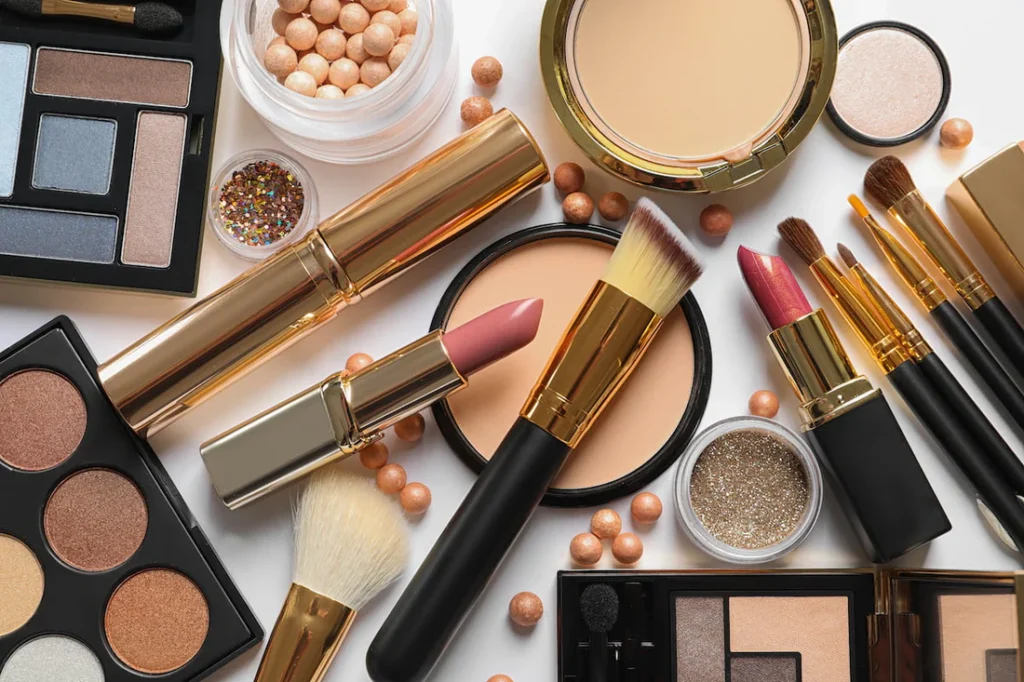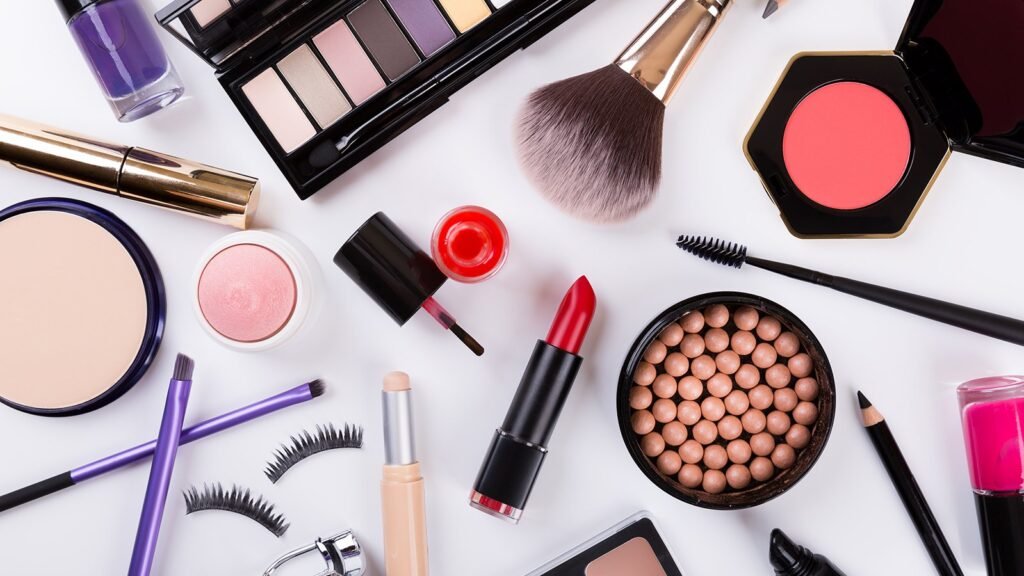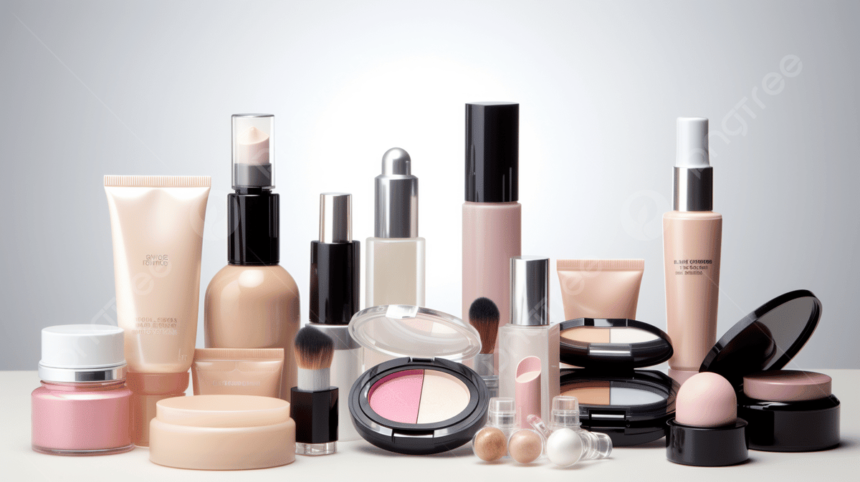Introduction: The Silent Threat in Everyday Beauty Products
Toxic chemicals in beauty products have become a growing concern for health and safety in today’s cosmetic industry. Every day, millions of people around the world apply lotions, creams, makeup, and hair care products without a second thought. These items are part of personal hygiene, confidence, and style. However, beneath the appealing packaging and pleasant scents lies a serious issue — the hidden presence of harmful substances that may impact long-term well-being. Many of these chemicals are added to extend shelf life, improve texture, or enhance fragrance, yet their potential effects on the body raise important questions about safety and regulation.
The modern beauty industry markets innovation and glamour, yet consumers remain unaware of how deeply these chemicals influence their daily routines. Studies have revealed that many cosmetic products contain compounds capable of disrupting hormones, irritating skin, damaging internal organs, or contributing to chronic illnesses. This issue transcends borders and brands, highlighting a global challenge in balancing beauty standards with health protection.
This article explores the hidden dangers of toxic chemicals in beauty products, how they interact with the human body, and practical ways to make safer, more informed choices. Understanding what goes into these everyday items is not only crucial for personal well-being but also vital for promoting environmental and public health.
The Chemical Landscape of Cosmetics
Cosmetics and personal care products are sophisticated chemical formulations designed to achieve specific effects. From moisturizing to coloring, each product relies on a mixture of natural and synthetic ingredients. However, the complexity of these formulations can conceal hazardous compounds that are not always disclosed on labels.
Many harmful substances are used to stabilize products, preserve them from microbial contamination, or enhance their appearance. Among the most concerning are parabens, phthalates, formaldehyde-releasing preservatives, silicones, and synthetic fragrances. These compounds may serve functional purposes but are associated with health risks ranging from hormone disruption to allergic reactions.
Even small doses can accumulate in the body through continuous use. The skin, being a highly absorbent organ, allows certain chemicals to penetrate the bloodstream, particularly when used over long periods. The risk becomes even greater when multiple products — such as lotions, foundations, and hair sprays — are applied simultaneously, compounding exposure.

Parabens: The Ubiquitous Preservatives
Parabens are among the most commonly used preservatives in cosmetics, valued for their ability to prevent mold and bacteria. Despite their effectiveness, they mimic estrogen in the body and may interfere with hormonal balance. This imitation of natural hormones can affect reproductive health and has been linked to various endocrine disorders.
Long-term exposure is especially concerning for those who use multiple paraben-containing products daily. Studies have found traces of these chemicals in human tissues, indicating that they are not easily eliminated from the body. The growing awareness of their potential effects has led to increased demand for paraben-free alternatives, though many products still contain them under different names such as methylparaben, propylparaben, or butylparaben.
Phthalates and Fragrance Additives
Phthalates are plasticizers used to make cosmetics flexible, smooth, and long-lasting. They are commonly found in perfumes, nail polishes, and hair sprays. While they make fragrances cling to the skin or hair, they are also suspected of disrupting hormonal systems and affecting fetal development.
One of the most troubling aspects of phthalates is their presence under the term “fragrance” on labels. The word “fragrance” can legally conceal dozens or even hundreds of individual chemicals, many of which may be synthetic and untested. This lack of transparency makes it nearly impossible for consumers to determine what they are being exposed to.
Continuous inhalation or dermal absorption of these substances can have cumulative effects over time. For those with sensitive skin or respiratory conditions, fragrance-laden products may also trigger allergic responses, headaches, or skin irritation.
Silicones and Synthetic Smoothness
Silicones are commonly used in shampoos, conditioners, and skin care products to give a silky, non-greasy finish. While they provide immediate cosmetic benefits, Toxic chemicals in beauty products they can coat the skin and hair, trapping dirt and preventing moisture from penetrating naturally. This artificial barrier may make skin appear smooth temporarily but can contribute to dryness and irritation over time.
In environmental terms, silicones are not easily biodegradable. Their persistence in water systems poses risks to aquatic life, creating long-term ecological challenges. Despite their widespread use, concerns about their environmental and dermatological effects continue to grow.
Formaldehyde and Preservative Derivatives
Some hair straighteners, nail treatments, and shampoos contain formaldehyde or chemicals that release it gradually to prevent bacterial growth. Formaldehyde is recognized as a potential carcinogen, and even low levels of exposure can cause skin irritation, respiratory distress, and allergic reactions.
Although certain countries have imposed restrictions on its use, it can still appear in products under different names such as DMDM hydantoin, imidazolidine urea, or quaternium-15. Repeated exposure to such ingredients, especially in enclosed spaces like salons, increases inhalation risks for both consumers and professionals.
Colorants and Contaminants in Makeup
Cosmetic pigments give vibrancy to lipsticks, eyeshadows, and blushes, but not all colorants are safe. Some synthetic dyes contain heavy metals such as lead, arsenic, or cadmium. These metals accumulate in the body and can affect neurological, reproductive, and immune systems.
Natural colorants are often considered safer, yet even they can be contaminated during manufacturing. The purity of ingredients, therefore, becomes a crucial factor in determining product safety. Regulatory standards exist, but enforcement varies across regions, Toxic chemicals in beauty products leaving significant gaps in consumer protection.
Shampoos and Hair Products: The Hidden Exposure
Hair care products are among the most frequently used personal care items. Shampoos, conditioners, and styling products often contain sulfates, parabens, and synthetic fragrances that can irritate the scalp and strip natural oils.
One of the most common irritants is sodium lauryl sulfate (SLS), a detergent that creates foam but can disrupt the scalp’s natural barrier. Overuse can lead to dryness, itching, and inflammation. Combined with other chemical additives, these effects may contribute to long-term scalp sensitivity and hair thinning.
Hair dyes pose additional risks, as they contain aromatic amines and ammonia derivatives that can be absorbed through the skin. Continuous use of permanent dyes has been associated with allergic dermatitis and other health effects, emphasizing the importance of careful ingredient scrutiny.
The Cumulative Effect of Daily Exposure
A single application of a Toxic chemicals in makeup and hair care products may contain only trace amounts of toxic ingredients, but repeated exposure adds up. Over years or decades, small doses accumulate, influencing hormone regulation, metabolism, and cellular function.
The cumulative impact of cosmetic chemicals has been compared to “low-dose chronic exposure,” where subtle biological changes gradually manifest into health problems. Because symptoms may take years to appear, it becomes difficult to establish direct cause-and-effect relationships, complicating public understanding and regulation. https://www.safecosmetics.org/toxic-ingredients
Environmental Consequences of Beauty Chemicals
Toxic chemicals in personal care products do not vanish after use. They wash off into drains, contaminating waterways and soil. Many synthetic compounds resist breakdown, remaining in ecosystems for long periods. Aquatic animals are especially vulnerable, as certain ingredients can disrupt their reproductive and developmental systems.
Microplastics used in exfoliants or packaging further contribute to pollution, entering the food chain and eventually reaching human consumption. The environmental dimension of cosmetic toxic chemicals thus extends beyond personal health, linking individual choices to global ecological balance.
Label Literacy: Understanding What You Buy
One of the biggest challenges for consumers is interpreting ingredient lists. Many harmful chemicals are hidden under complex or generic terms. For example, “fragrance,” “perfume,” or “colorant” can represent multiple undisclosed substances.
Learning to read labels empowers individuals to make safer choices. Ingredients listed at the beginning of a label are usually present in higher concentrations. Avoiding hair care and makeup products in toxic chemicals with unrecognizable or excessively long ingredient names is a good first step. Opting for simpler formulations, preferably those certified for safety and sustainability, reduces unnecessary exposure.
The Illusion of ‘Natural’ and ‘Organic’
Many brands now advertise “natural” or “organic” cosmetics, but these terms are not strictly regulated in all regions. A product labeled “natural” may still contain synthetic preservatives or fragrances. Similarly, plant-based ingredients can still cause allergies or irritation if improperly processed.
Consumers should be cautious of marketing language that emphasizes purity without scientific validation. Verifying the credibility of product certifications and cross-referencing ingredient databases can help distinguish genuinely safe products from misleading claims. https://www.aad.org/public/everyday-care/hair-scalp-care/hair/healthy-hair-tips
Skin Absorption and Biological Impact
The human skin acts as both a barrier and a gateway. Lipid-soluble chemicals can penetrate its outer layers and enter the bloodstream. Factors such as skin temperature, hydration, and area of application influence absorption rates.
Once absorbed, toxic compounds may accumulate in fatty tissues or interact with enzymes and hormones. Some interfere with DNA repair mechanisms or oxidative stress responses, contributing to aging and disease. The complexity of these biological interactions underscores the importance of minimizing exposure wherever possible
The Need for Stronger Regulation
Regulatory frameworks for cosmetics vary widely across the world. Some countries require pre-market testing and disclosure of all ingredients, while others rely on post-market surveillance. The lack of consistency allows unsafe products to circulate internationally, sometimes under misleading labels.
More comprehensive regulation is needed to ensure that products meet uniform safety standards. Mandatory ingredient disclosure, stricter testing requirements, and independent safety reviews would greatly enhance consumer protection.

Alternatives and Safer Choices
Consumers have growing access to safer beauty products formulated with minimal or non-toxic ingredients. Many companies now use naturally derived preservatives, plant-based oils, and biodegradable compounds to reduce harm.
Simplifying beauty routines by using fewer products can also minimize chemical exposure. DIY alternatives made from basic, food-grade ingredients such as coconut oil, aloe Vera, or oatmeal can provide effective care without harmful additives.
While such options may not replace every commercial product, they represent a shift toward conscious consumption — one that prioritizes health and sustainability over marketing trends.
Raising Awareness and Encouraging Education
Education plays a key role in reducing chemical exposure. Understanding ingredient names, product labels, and potential effects empowers individuals to make informed decisions. Public health initiatives can promote awareness about cosmetic safety, encouraging consumers to demand greater transparency from manufacturers.
Schools and universities can include topics related to toxicology, environmental science, and consumer awareness in their curricula. Widespread understanding can influence both policy and corporate behavior, leading to a more responsible beauty industry.
Conclusion: Beauty Without Harm
The modern pursuit of beauty should not come at the cost of health or environmental integrity. The widespread use of toxic chemicals in makeup and hair care products Toxic chemicals in beauty products highlights the urgent need for awareness, regulation, and reform.
Every purchase represents a choice — a vote for the kind of industry and future one wishes to support. By favoring safe, transparent, and ethical products, consumers contribute to a collective shift toward healthier living and sustainable beauty.




